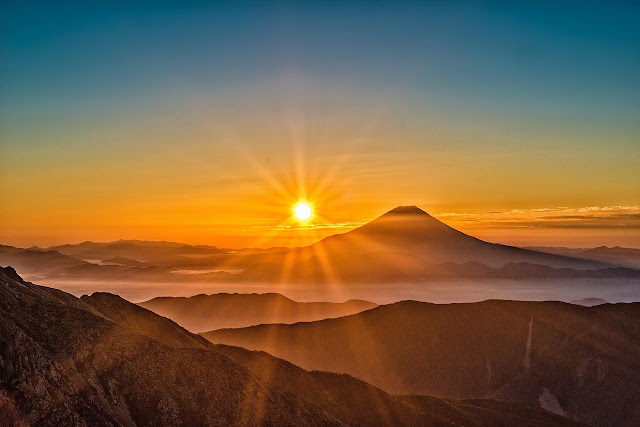Japan is a land where ancient traditions meet futuristic innovation. Whether you're looking for tranquil temples, vibrant nightlife, rich history, or mouthwatering cuisine, Japan delivers it all wrapped in a package of extreme politeness, punctuality, and efficiency. This comprehensive travel guide will prepare you for an unforgettable journey through the Land of the Rising Sun.
Why Japan Should Be on Your Travel Bucket List
Japan is like no other place on Earth. With its seamless blend of old and new, it caters to every type of traveler—history buffs, nature lovers, tech enthusiasts, and foodies alike. Imagine standing before Mount Fuji one morning and later that evening shopping in Shibuya’s neon jungle. That’s the kind of magical duality Japan offers.
What makes Japan unique isn’t just the aesthetic harmony of Zen gardens and skyscrapers. It’s the people—known for their warmth, respect, and dedication to detail. The safety, cleanliness, and orderliness of the country make it an easy place to navigate, even for solo travelers or those who don’t speak Japanese.
From cherry blossoms in spring to snow festivals in winter, every season paints Japan with a new palette. And did we mention the sushi, ramen, and wagyu beef? Japanese cuisine is a whole world unto itself.
Whether you’re hopping between samurai castles, soaking in a countryside onsen, or playing retro games in Akihabara, you’ll realize Japan isn’t just a destination—it’s an experience that sticks with you long after you return home.
Overview of Japan’s Geography and Climate
Japan is an archipelago of over 6,800 islands, but the four main ones—Honshu, Hokkaido, Kyushu, and Shikoku—house the majority of the population and travel attractions. The country stretches over 3,000 kilometers (1,900 miles), creating diverse climate zones from the snowy north to the subtropical south.
Honshu is the heart of Japan, home to Tokyo, Kyoto, Osaka, and Mount Fuji. Hokkaido in the north is known for its powdery snow and natural parks. Kyushu features volcanic landscapes and hot springs, while Shikoku offers a peaceful retreat with beautiful coastal towns.
The climate is mostly temperate but varies significantly:
-
Spring (Mar–May): Mild and blooming with cherry blossoms.
-
Summer (Jun–Aug): Hot and humid, with occasional typhoons.
-
Autumn (Sep–Nov): Cool with stunning fall foliage.
-
Winter (Dec–Feb): Cold with snowfall in the north and ski resorts in full swing.
Being aware of these geographic and climatic differences helps plan the perfect itinerary and pack accordingly.
Best Time to Visit Japan
Seasonal Breakdown (Spring, Summer, Fall, Winter)
Timing your trip can make a big difference. Here’s what to expect from each season:
-
Spring (March to May): Cherry blossoms (sakura) are the highlight. Cities like Kyoto and Tokyo turn pink with blooming trees, and hanami (blossom viewing) parties are everywhere. Temperatures are pleasant, making it ideal for sightseeing.
-
Summer (June to August): Starts with a rainy season in June, followed by a hot and humid July and August. However, summer festivals (matsuri), fireworks (hanabi), and vibrant street food stalls make it exciting. Hokkaido is cooler and a great escape from the heat.
-
Autumn (September to November): Another favorite among travelers. The air is crisp, and the fall foliage in places like Nikko and Kyoto is jaw-dropping. Cultural festivals are also prominent during this time.
-
Winter (December to February): Cold, especially in northern regions. But it’s ski and snowboarding paradise in Hokkaido and the Japanese Alps. Also, winter illuminations across cities turn nights magical.
Each season has its perks, so your choice should depend on your interests—whether it’s nature, festivals, food, or winter sports.
Events and Festivals Worth Traveling For
Japan hosts some of the world’s most fascinating events. Here are a few that might influence your travel plans:
-
Cherry Blossom Festivals (March–April): Held nationwide, but Ueno Park (Tokyo), Maruyama Park (Kyoto), and Hirosaki Castle are top picks.
-
Gion Matsuri (Kyoto, July): Japan’s most famous festival with floats, processions, and traditional attire.
-
Tanabata (Star Festival, August): Cities decorate with colorful streamers and wishes hung on bamboo.
-
Snow Festival (Sapporo, February): Giant ice sculptures and winter fun for the whole family.
-
Autumn Festivals (October): Featuring parades, lanterns, and cultural displays, especially in Takayama and Nikko.
These events provide a peek into Japan’s soul—deeply cultural, community-focused, and visually spectacular. Booking in advance is essential during these periods, as both locals and tourists travel extensively.
Entry Requirements and Travel Documents
Visa Policies for Different Countries
Japan has simplified travel for many nationalities with its visa exemption agreements. As of 2025:
-
No Visa Required: Citizens from the U.S., Canada, Australia, the EU, Singapore, and over 60 other countries can stay for up to 90 days.
-
eVisa Option: For countries not on the visa-exempt list, Japan now offers a streamlined eVisa application process.
-
Extension Possibilities: Short-term stays may be extended under specific conditions, but it's best to consult Japan Immigration or a local embassy.
COVID-19 Updates and Travel Health Guidelines
As of mid-2025, Japan has lifted most COVID-19 restrictions but still maintains high hygiene standards:
-
Mask-Wearing: Still recommended in crowded indoor spaces.
-
Vaccination Proof: Not mandatory, but carrying a digital vaccination certificate is useful.
-
Health Apps: Travelers are encouraged to use health monitoring apps, though not required.
-
Travel Insurance: Strongly advised and often a requirement for visa issuance.
Japan’s healthcare system is excellent, but can be expensive without insurance. Basic English is spoken in most hospitals in major cities, but always keep important phrases or a translation app handy.
Getting Around Japan
Public Transport System Overview
Japan’s public transportation is nothing short of legendary. The trains are not only punctual to the second but also clean and efficient. Here are the key options:
-
JR (Japan Railways) Lines: Cover the entire country and include the famous Shinkansen (bullet trains).
-
Subways and Metros: In cities like Tokyo, Osaka, and Kyoto. Clean, fast, and foreigner-friendly.
-
Buses: Ideal for reaching rural areas or saving on budget. Overnight buses also help cut accommodation costs.
-
Taxis: Expensive but reliable. Best used in emergencies or for short distances in small towns.
Navigating the system is easy with IC cards like Suica, Pasmo, or Icoca—rechargeable and usable across transport systems and even convenience stores.
Japan Rail Pass: Worth It or Not?
The Japan Rail Pass is a game-changer for tourists. It allows unlimited travel on JR lines, including the bullet train (except Nozomi and Mizuho lines), at a fraction of the cost. Options include:
-
7-Day Pass: ¥50,000 (~$350)
-
14-Day Pass: ¥80,000 (~$560)
-
21-Day Pass: ¥100,000 (~$700)
It’s best for those planning to visit multiple cities like Tokyo, Osaka, Kyoto, and Hiroshima. However, if you're sticking to just one region, regional passes (like the Kansai Area Pass) might be more cost-effective.
Booking your JR Pass in advance online is not only cheaper but also more convenient as some passes are no longer available for purchase inside Japan.












0 Comments